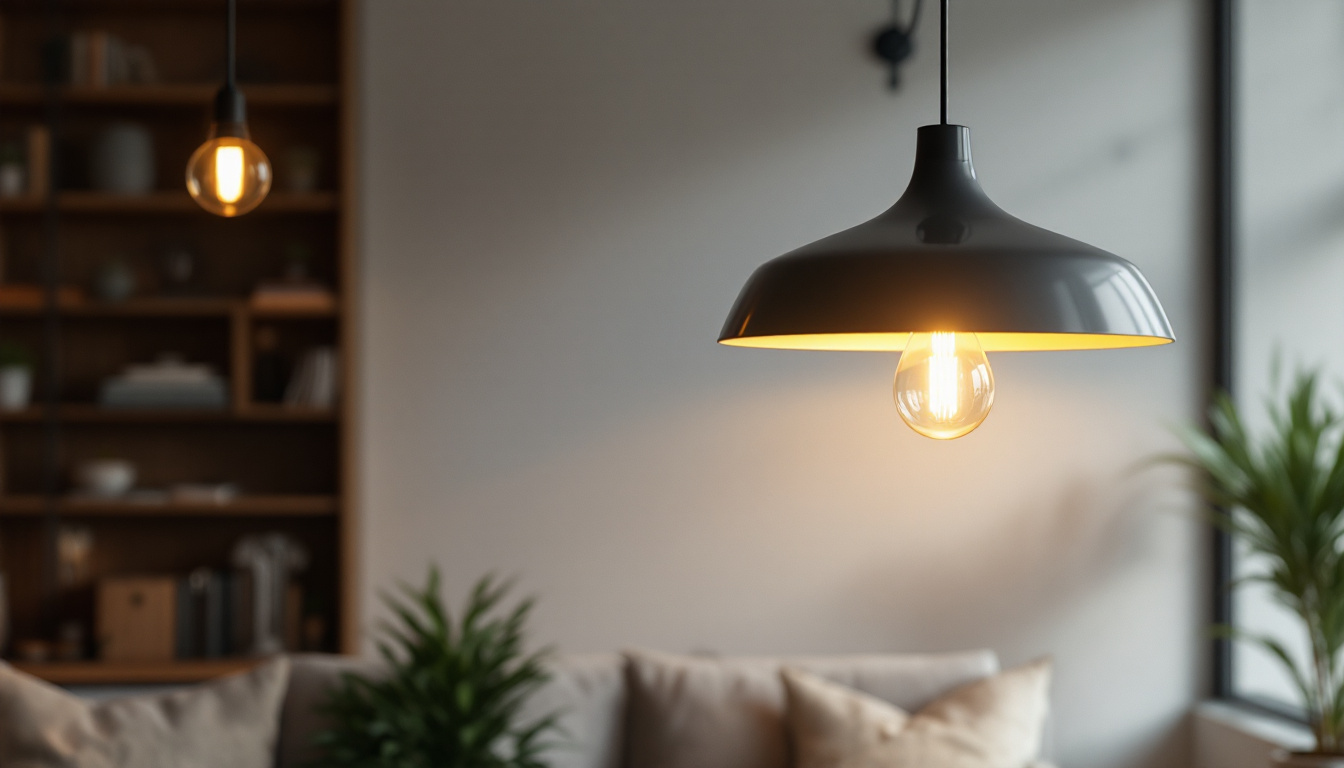
As the lighting industry continues to evolve, the introduction of new light bulbs presents both opportunities and challenges for lighting contractors. With advancements in technology and a growing emphasis on energy efficiency, understanding the do’s and don’ts of working with new light bulbs is essential for success. This article will delve into the key considerations that lighting contractors should keep in mind when navigating this dynamic landscape.
Before diving into the do’s and don’ts, it is crucial for lighting contractors to have a solid understanding of the various types of light bulbs available in the market today. Each type has its unique characteristics, advantages, and disadvantages that can significantly impact their application in different settings.
Incandescent bulbs have been a staple in lighting for decades. They produce a warm light and are often favored for their aesthetic appeal. However, they are not the most energy-efficient option available. Contractors should be aware that while they may be suitable for certain applications, the trend is moving towards more energy-efficient alternatives. Additionally, incandescent bulbs have a shorter lifespan, typically around 1,000 hours, which can lead to more frequent replacements and increased waste. Understanding the environmental impact of these bulbs is essential, especially as consumers become more eco-conscious.
Compact Fluorescent Lamps (CFLs) and Light Emitting Diodes (LEDs) have gained popularity due to their energy efficiency and longevity. CFLs use about 70% less energy than incandescent bulbs and can last up to ten times longer. LEDs are even more efficient, using up to 80% less energy and boasting a lifespan of up to 25,000 hours. Understanding the benefits and limitations of these bulbs is crucial for making informed recommendations to clients. Moreover, LEDs offer versatility in color temperature options, allowing for a range of lighting atmospheres from warm to cool tones. This adaptability makes them ideal for various settings, from cozy living rooms to bright, focused workspaces, enhancing both functionality and mood in any environment.
Smart bulbs represent the cutting edge of lighting technology. These bulbs can be controlled remotely via smartphone apps or voice commands, enabling users to customize their lighting experience. While they offer convenience and flexibility, contractors must be prepared to educate clients on the installation process and compatibility with existing systems. Furthermore, smart bulbs often come with features such as scheduling, dimming, and color-changing capabilities, which can significantly enhance the ambiance of a space. As the Internet of Things (IoT) continues to expand, the integration of smart lighting into home automation systems is becoming increasingly popular, making it essential for contractors to stay updated on the latest technologies and trends in this rapidly evolving market.
When it comes to integrating new light bulbs into projects, there are several best practices that lighting contractors should follow. These do’s can help ensure successful installations and satisfied clients.
The lighting industry is constantly evolving, with new technologies and products emerging regularly. Staying informed about the latest trends, such as advancements in LED technology or changes in energy efficiency regulations, is essential for lighting contractors. This knowledge allows contractors to provide clients with the most up-to-date information and recommendations, positioning themselves as trusted experts in the field.
As energy efficiency becomes a priority for many homeowners and businesses, lighting contractors should take the time to educate clients about the benefits of energy-efficient lighting options. Highlighting the long-term cost savings and environmental impact can help clients make informed decisions. Providing comparisons between traditional and modern lighting solutions can also facilitate discussions about energy-efficient upgrades.
Different environments require different lighting solutions. Whether it’s a residential, commercial, or industrial setting, understanding the specific needs of each application is crucial. For instance, task lighting in a workspace may require brighter, focused lighting, while ambient lighting in a home may prioritize warmth and comfort. Tailoring recommendations based on the application will enhance client satisfaction and project outcomes.
While there are many best practices to follow, there are also common pitfalls that lighting contractors should avoid. Being aware of these don’ts can help prevent costly mistakes and ensure smooth project execution.
With the variety of light bulbs available, compatibility can become an issue. Contractors must ensure that new bulbs are compatible with existing fixtures, dimmers, and smart home systems. Failing to do so can lead to performance issues, flickering, or even damage to the lighting system. Conducting thorough compatibility checks before installation is essential to avoid these problems.
Lighting contractors must be aware of local building codes and regulations regarding lighting installations. Ignoring these regulations can result in fines, project delays, or the need for costly rework. Staying informed about local codes and ensuring compliance during installations is a critical responsibility for contractors.
While time is often of the essence in contracting work, rushing the installation process can lead to mistakes and subpar results. Taking the time to properly install and test new light bulbs ensures that they function as intended and meet client expectations. A thorough installation process can also help identify any potential issues before they become significant problems.
Successful installation of new light bulbs requires adherence to best practices that ensure optimal performance and longevity. Here are some key practices that lighting contractors should implement.
Having the right tools on hand is essential for efficient and safe installations. This includes not only basic tools like screwdrivers and pliers but also specialized equipment for handling specific types of bulbs. For example, using a bulb changer can make it easier to replace high or hard-to-reach bulbs without risking damage to the fixture or injury to the installer.
After installation, it is crucial to test the entire lighting system to ensure everything is functioning correctly. This includes checking for flickering, dimming, or any other issues that may arise. Conducting a thorough test can help identify problems early on, allowing for timely resolutions and ensuring client satisfaction.
Educating clients on how to maintain their new lighting systems can prolong the lifespan of the bulbs and fixtures. Providing tips on cleaning, replacing bulbs, and troubleshooting common problems can empower clients to take care of their lighting systems effectively. This not only enhances client satisfaction but also positions the contractor as a knowledgeable resource.
When introducing new light bulbs to clients, it is common to encounter a variety of concerns. Addressing these concerns proactively can help build trust and confidence in the contractor’s expertise.
Many clients may initially be hesitant to invest in new lighting technologies due to perceived high costs. Contractors should be prepared to explain the long-term savings associated with energy-efficient bulbs, including reduced energy bills and longer replacement intervals. Providing a cost-benefit analysis can help clients see the value in their investment.
Some clients may worry that new light bulbs, particularly LEDs, will not provide the warm, inviting light they desire. It is important for contractors to educate clients about the variety of color temperatures available in modern bulbs. Offering samples or demonstrations can help clients visualize how different bulbs will look in their space, alleviating aesthetic concerns.
With the rise of smart bulbs, some clients may feel overwhelmed by the technology involved. Contractors should be ready to guide clients through the setup process and explain how to use the technology effectively. Providing clear instructions and being available for follow-up questions can help clients feel more comfortable with their new lighting systems.
The lighting industry is continuously evolving, and staying ahead of future trends can provide contractors with a competitive edge. Here are some emerging trends that may shape the future of lighting.
As environmental concerns grow, there is an increasing emphasis on sustainable lighting solutions. This includes not only energy-efficient bulbs but also the use of recyclable materials and eco-friendly manufacturing processes. Contractors who prioritize sustainability in their projects can appeal to environmentally conscious clients and contribute to a greener future.
The Internet of Things (IoT) is transforming how lighting systems operate. Smart lighting solutions that can be integrated with other smart home devices are becoming more popular. Contractors should stay informed about IoT developments and consider how they can incorporate these technologies into their offerings.
Human-centric lighting focuses on creating lighting environments that enhance well-being and productivity. This trend is gaining traction in both residential and commercial settings. Understanding the principles of human-centric lighting can help contractors design spaces that promote health and comfort, setting them apart in a competitive market.
As the lighting industry continues to evolve with the introduction of new light bulbs, lighting contractors must navigate this landscape with knowledge and expertise. By understanding the different types of bulbs, adhering to best practices, and addressing client concerns, contractors can successfully integrate new lighting technologies into their projects. Staying informed about industry trends and future developments will further enhance their ability to meet client needs and position themselves as leaders in the field. Embracing these do’s and don’ts will not only ensure successful installations but also foster long-term relationships with clients, ultimately driving business growth.
Ready to elevate your lighting projects with the latest in energy-efficient technology and smart lighting solutions? Look no further than LumenWholesale, where we provide lighting contractors with the highest quality, spec-grade lighting products at unbeatable wholesale prices. Say goodbye to middleman markups and hello to a vast selection of reliable, high-performance lighting that meets the strictest industry standards. Plus, with free shipping on bulk orders, you can stock up on premium lighting without any hidden fees or compromises. Don’t miss out on the perfect blend of quality, affordability, and convenience. Visit LumenWholesale today for Wholesale Lighting at the Best Value, and light up your clients’ spaces with confidence and style.

Explore the pros and cons of modern pendant lighting compared to alternative options in this insightful guide for lighting contractors.

Discover how T8 4Ft LED bulbs are revolutionizing the lighting industry with their energy efficiency, longevity, and superior illumination.

Discover how exterior dusk to dawn lights can revolutionize the workflow for lighting contractors by enhancing efficiency and reducing costs.

Discover overlooked lighting fixture sale tips that lighting contractors often miss. Boost your projects with expert insights, saving up to 20%—learn more now!.